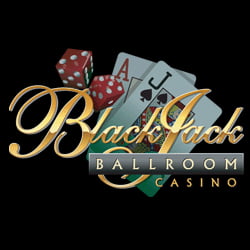
Welcome, passionate players and aspiring strategists, to our in-depth exploration of the captivating world of blackjack. Today, we delve into the enigmatic art of card counting, a technique shrouded in mystique and renowned for its ability to level the playing field between the house and the player. Prepare to unravel the secrets of this ingenious technique that has captivated minds for decades.
The Essence of Card Counting
At its core, card counting is a method devised to determine the ratio of high to low cards remaining in a deck during a game of blackjack. By keeping track of which cards have been dealt and adjusting their bets accordingly, skilled players aim to gain an edge over the casino. While casinos frown upon this technique, it remains legal as it simply involves employing one’s mental prowess rather than any form of cheating.
Astonishing Mental Agility
True mastery of card counting requires a formidable mental prowess, combining sharp mathematical calculations with flawless memory. The adept card counter can swiftly assign values to each card as they are dealt, keeping a running count in their mind amidst the suspense of the game. This mental acrobatics demands immense concentration and a quick-thinking mind that remains unruffled in the face of pressure.
The High-Low System: A Classic Approach
Among the arsenal of card counting techniques, the High-Low system reigns supreme. This method, pioneered by the legendary Edward O. Thorp in the early 1960s, assigns point values to different cards, tracking their presence in the deck as they are unveiled. Here’s a breakdown of the point values:
- Low Cards (2-6): Each card adds one point to the running count.
- Middle Cards (7-9): These cards are considered neutral and do not alter the running count.
- High Cards (10-Ace): Each card deducts one point from the running count.
The running count provides the card counter with essential information regarding the ratio of high to low cards remaining in the deck. A positive count indicates a deck rich in high cards, favoring the player, while a negative count signifies an abundance of low cards, putting the house at an advantage.
Taking the Leap: Adjusting Your Bets
Now armed with this vital information, it’s crucial to correctly adjust your betting patterns based on the running count. During a positive count, when the deck is laden with high cards, it is highly advantageous to increase your bet size to capitalize on the momentary edge. Conversely, during a negative count, it is prudent to wager conservatively or even consider abstaining from placing bets until the count shifts in your favor.
The Art of Subtlety: Flying Under the Radar
While card counting may seem like the ultimate trump card, casinos have implemented countermeasures to detect skilled counters. It is crucial to remember that maintaining a low profile is key to avoiding unwanted attention from casino personnel. Limiting bet fluctuations, blending in with recreational players, and refraining from excessive celebration or obvious indicators of card counting are essential tactics to escape detection.
Practicing the Craft: Sharpen Your Skills
As with any art form, mastery lies in practice. Begin by honing your card counting skills in the comfort of your own home, using multiple decks, and gradually progress to real-world scenarios. Utilize online resources, charts, and simulators to simulate different scenarios and refine your counting technique. Remember, only with dedication and countless hours of practice can you truly master this elegant technique.
Dear readers, as we conclude this bird’s-eye view into the mesmerizing world of card counting, we implore you to approach this technique with the utmost respect and integrity. Card counting is not a magic bullet that guarantees instant riches, but rather a tool that enhances your odds of success when wielded skillfully. May your journey towards mastering the deck be filled with excitement, learning, and ultimately, a rewarding experience at the blackjack table. Happy counting!






























